Your cart is empty
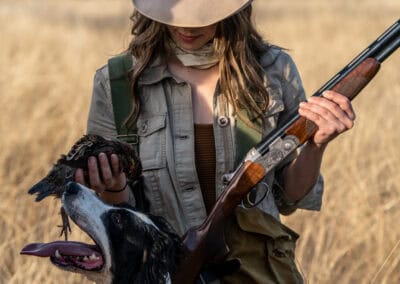
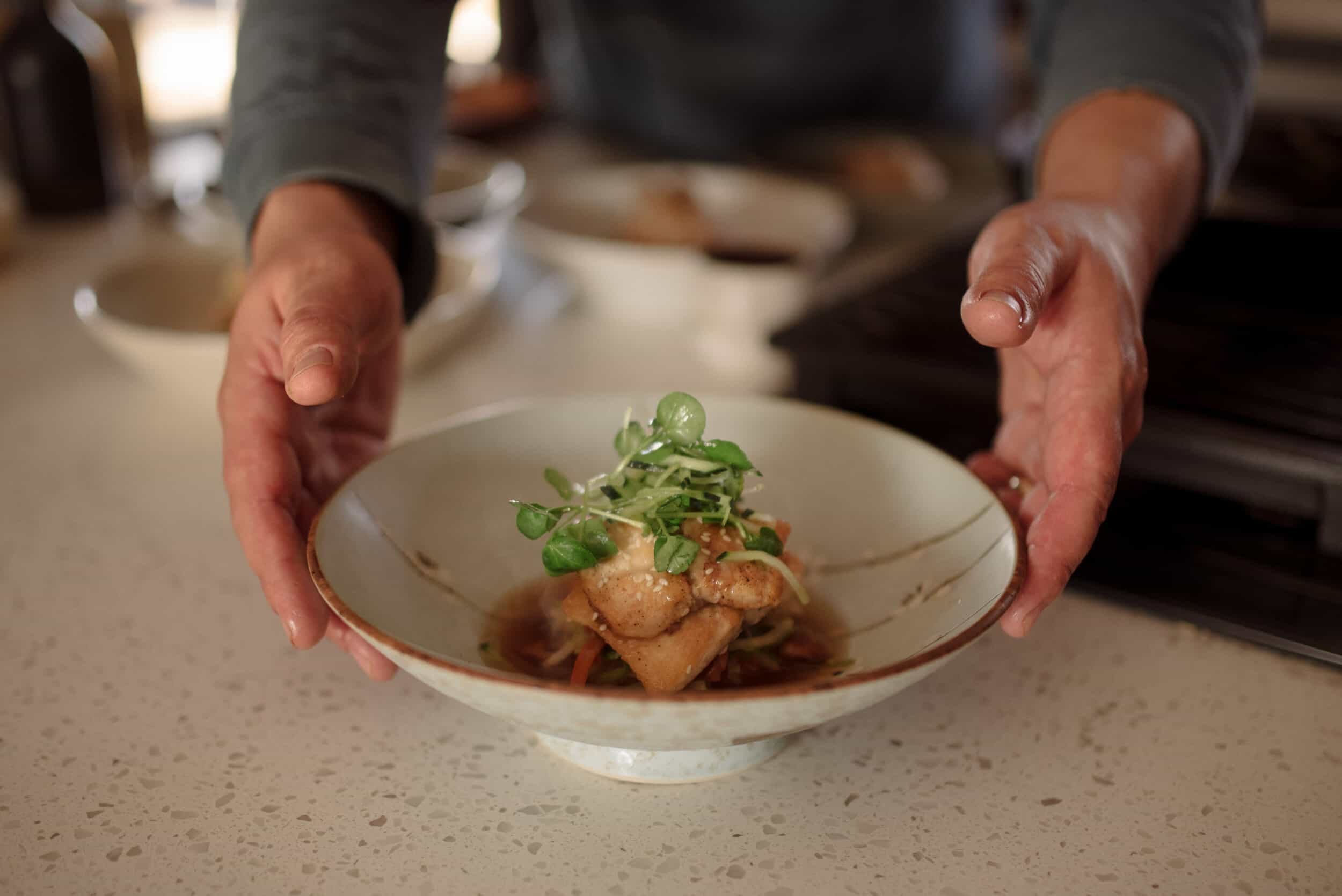
Christian Baumeister is a climber, skier, hunter, and angler. In the early season of winter when there isn’t enough snow to ski powder lines and the rocks are too cold to climb, you can find him at the river, with his fly rod in hand. Christian calls the eastern flank of Yellowstone home, a place that has endless miles of blue-ribbon trout fishing. But catching a trout on a fly is only half of the process. When it comes to preparing his fresh catch, Christian turns to close friend and local chef, Jacob Scott of the “The Laughing Pig.”
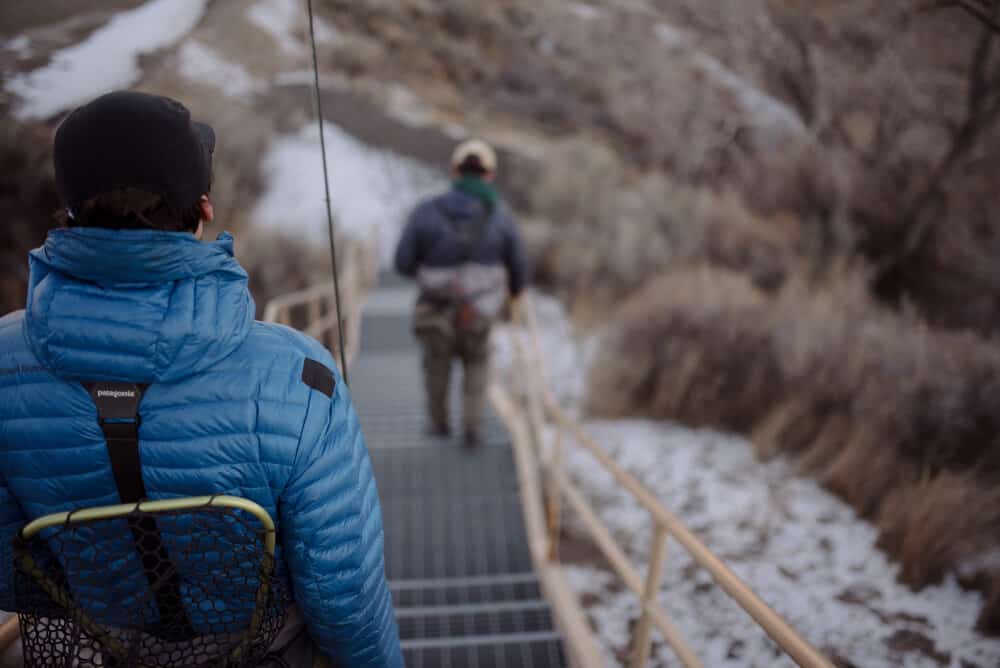
I met Christian and Jake on the banks of the Shoshone River at first light, wrapped up in layers of down and fresh coffee in hand. As we meander down the river where the sun had poured over the steep canyon wall illuminating the ripples and deep pools, Christian and Jake reminisce about how they got into fly fishing in the first place and why choosing the sport in the winter is appealing. Both have fond memories of learning the tricks of the trade and developing a stewardship ethic — knowledge that was all passed down to them from their fathers and grandfathers.
While winter fly fishing may require more layers, an extra cup of coffee and maybe even some whiskey to stay warm, the experience is worth it. “Even in a smaller rural town the river can be crowded during the summer with locals and visitors, so come winter you have the place to yourself,” Christian says to me.
But that’s not the only reason why these two bear the bitter Wyoming winter, “fresh fish that are caught during the winter season are different than those caught in the summer even when they are the same species and out of the same river,” Jake explains. “The flesh can be much firmer making it easier to filet and a better texture for eating.”
As we come to the edge of the bank, Christian and Jake slip into the river and I watch as their flies dance across the river before sinking below the surface — the bright indicator on the line floating with the current displays the art of nymphing. Unlike dry fly fishing, where you replicate the adult stage of a bug that’s drifting on the surface of the water, nymphs imitate the insects’ subsurface stages as they grow and mature in the cracks and undersides of rocks.
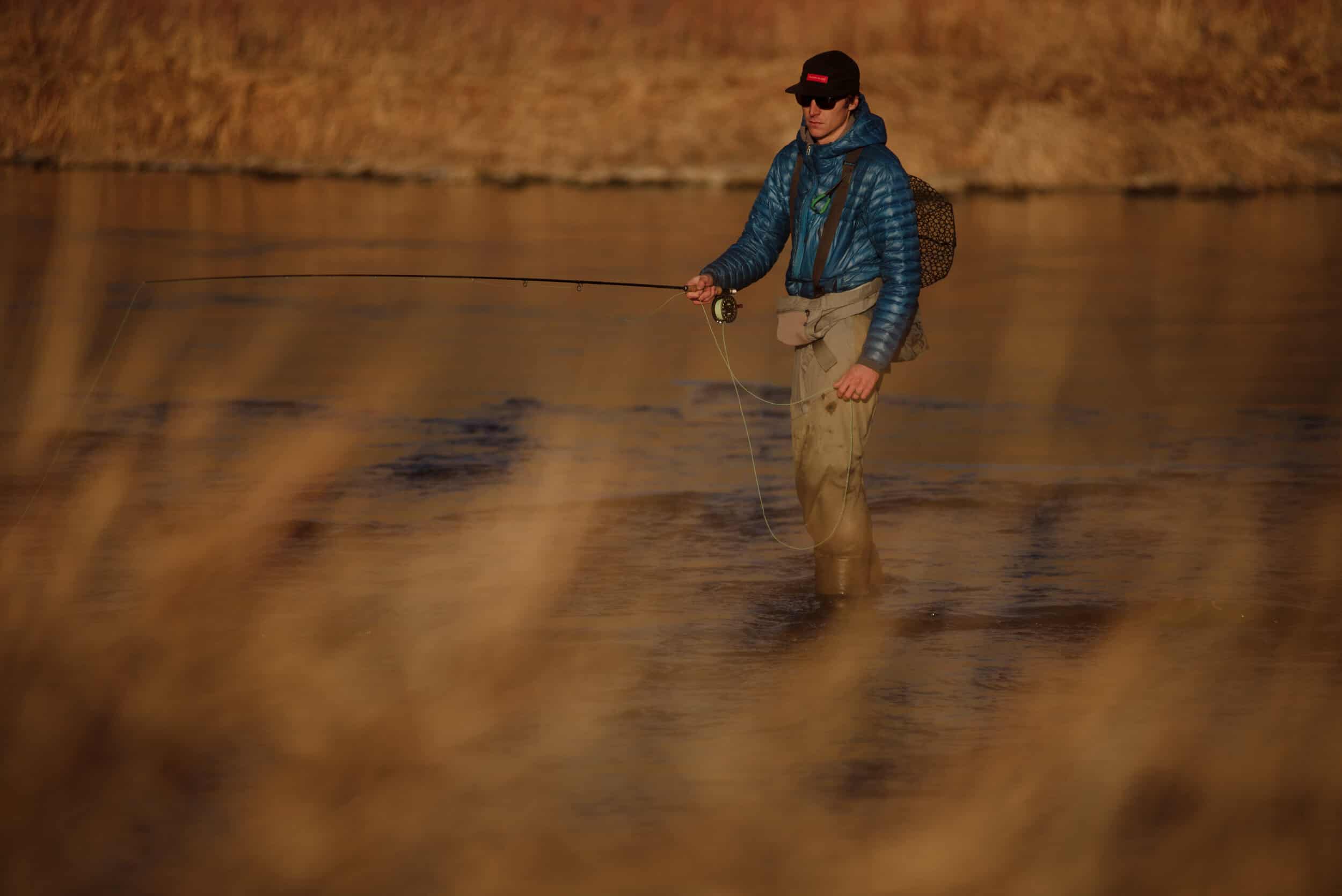
The bitter cold has started to freeze the eyelets of the rods, little tiny icicles hanging off the edges, making it harder to manipulate the line. “The trick to reducing the ice is Chapstick, simple and it works,” Christian says as he starts to dig around in his pockets to find some. And then there is the frantic zing of a taught line, the sound of a fish on a fly — a trout. With no Chapstick to be found, frozen eyelets and the satisfaction of a catch we leave the water and head for the truck.
Shortly thereafter, I find my frozen toes and fingers starting to unthaw in the warmth of Jake’s kitchen. The flash of the knife, oil in the pan, steaming rice cakes on the griddle; I am in awe as I watch the duo chop, season, taste, add ingredients, and taste again. The process unfolds much like the bending and flexing of the fly rod and stripping of the line. A mediation, a state of intentional movement and thought, awakened senses; different but the same.
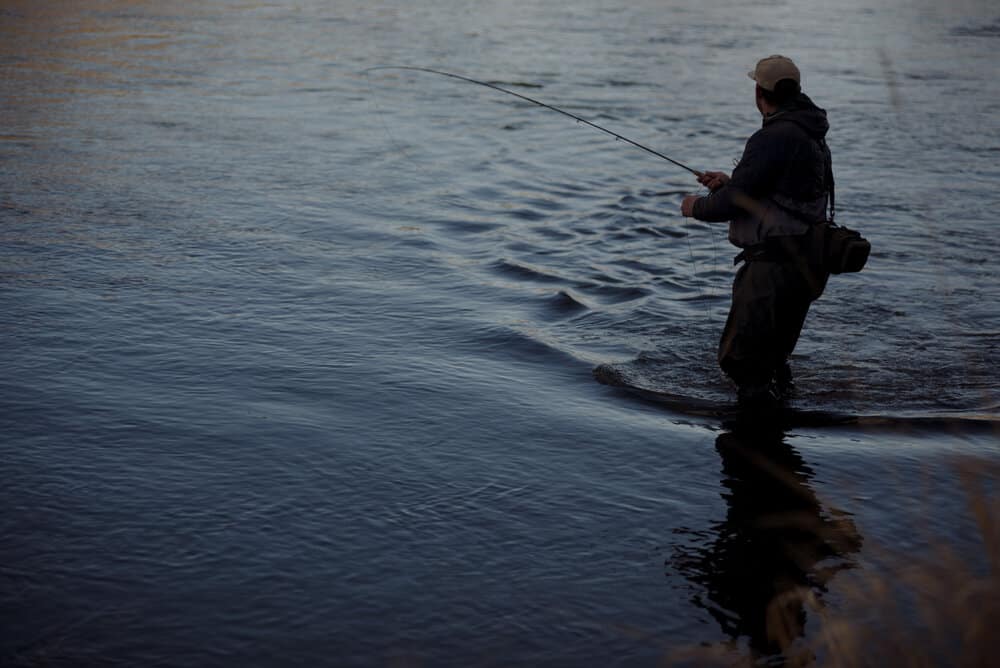
Cooking and fly fishing offers up a connection to both the ecosystem and one’s body … and it’s personal,” says Jake. Much of Jake’s culinary inspiration and training is steeped in wild and local foods. I take note of all the ingredients on the table, most of them can be sourced locally from the area. Christian and Jake also acknowledge their privilege of being able to easily access wild food on public lands and that not everyone has that opportunity, which is why they both take it very seriously; supporting small local ranchers and farmers and working on local issues that help to enhance the water and wildlife of the area.
As Jake finishes plating the ‘Misoyaki Trout’ dish, he describes that to really taste and fully experience the flavor of the ingredients “you have to trust your palete … people tend to over layer their flavors muddling their dish making it hard to distinguish the main flavors. The best thing you can do is keep it simple and the let the natural flavor speak for itself.” As I take a bite of the Asian inspired dish, I can differentiate and connect with every ingredient — the undertone of the hot peppers, the saltiness of the shoyu, a hint of the daikon radish and the mildly-sweet delicate texture of the trout.
From the river to the table, I witness how Jake and Christian represent wildness — Jake creating an untraditional trout recipe and Christian with his desire to be fly fishing in freezing temperatures. Each in their respective craft and together, they can explore and connect both on the river and in the kitchen learning what it means to be wild.
Serves 4
FOR THE TROUT
4 4-6 oz filet fresh trout
MISO SAUCE
2 tbs white miso
1 tbs honey
1 tbs toasted sesame oil
1 tbs rice vinegar
½ tsp ground ginger
½ tsp salt
PORCINI DASHI
6 cups of water
1 6 x 6 sheet of nori
2 cups Bonito flakes
1 tbs Sesame oil
5 grams of dried porcini mushrooms
1 tbsp shoyu
1 ½ tsp salt
STICKY RICE
1 cup Calrose rice
1 ½ cups water
1 tbs rice vinegar
1 tsp sugar
1 tsp salt
TROUT INSTRUCTIONS
Lightly season fish with salt and white pepper. Using an oil with a high smoking point (I prefer Grapeseed oil) heat pan until hot to touch. Add oil to the pan and heat until oil ripples in the pan. Sear fish flesh side down until browning color is achieved. Move fish to a pan. Lightly smear miso sauce over fish and bake in the oven at 450 degrees for 3 to 5 minutes.
We served this with a sauté of daikon radish, snow peas, red pepper, mushrooms, scallions, and hot peppers. A micro salad of cucumber and watercress dressed in sesame oil and lime to add freshness. Garnish with toasted sesame seeds.
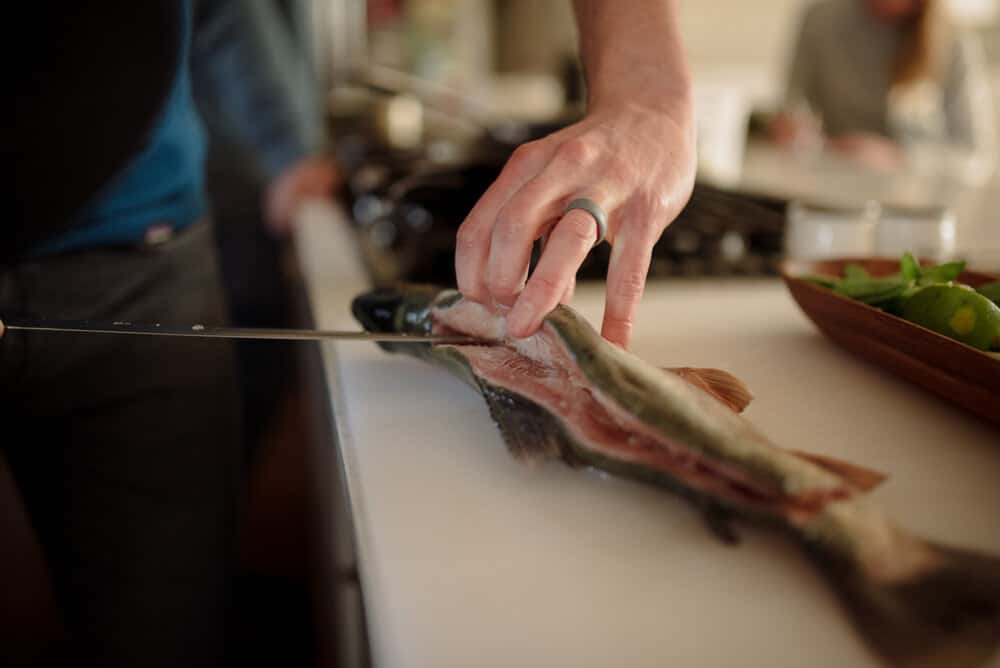
DASHI INSTRUCTIONS
Bring water to simmer, steep nori for 10 minutes. Strain liquid and reserve. Add oil to a pot on medium-low heat. Add dried porcini mushrooms and cook until they are softened. Return liquid to the pot. Add Bonito flakes and simmer for 20 minutes. Season with salt to taste. Strain through a fine-mesh strainer.
RICE INSTRUCTIONS
Bring water and rice to simmer. Season with salt. Stir once and cover. Turn down to low and let cook for about 20 minutes or until water is completely absorbed. Mix sugar in rice vinegar. Drizzle over rice and stir lightly. Recover rice for 10 minutes.
Related Stories


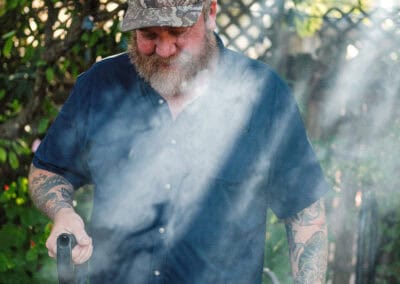
Latest Stories


